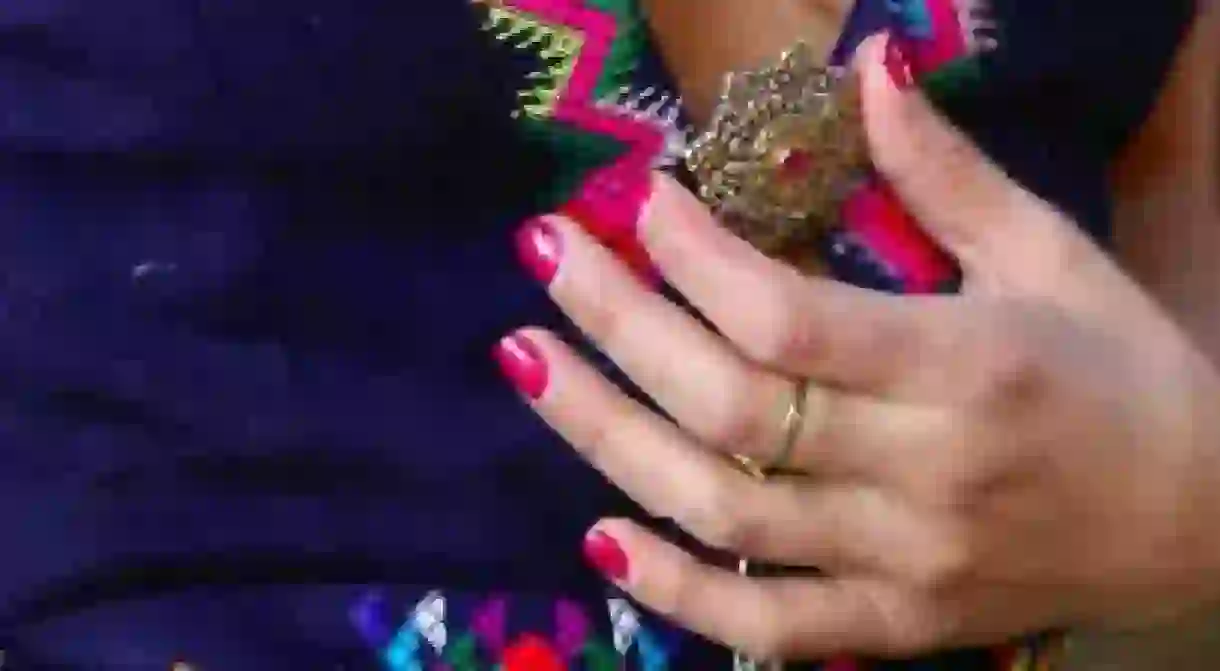Chimmi Choden: The Bhutanese Fashion Designer To Watch

For most, Bhutan’s fashion scene is as unexplored as Bhutan itself. But in reality, fashion is an exploding industry there, and the designer leading the pack is Chimmi Choden. By mixing the artistic heritage of Bhutan’s intricate weaving culture with a modern twist, CHIMMI House of Design is grabbing the attention of both local and global fashionistas.
You could say fashion design is in Chimmi Choden’s blood. With her mom designing the cabin crew’s first uniform of what was Bhutan’s only airline, Druk Air, Chimmi remembers textile weaving as an integral part of her childhood. “I was always surrounded by weaving growing up, I was always knitting and cross stitching and after college, I decided to take a short course on fashion design and then it was all YouTube and Google. I experimented and wasted a lot of textiles but I finally made it here.”
CHIMMI House of Design is a cottage-based design boutique in Bhutan focused on the development of textiles, innovative apparels, accessories and decor items. All designs contribute to the Bhutan craft sector by promoting traditional Bhutanese weaving. Weaving is an age-old tradition in Bhutan that, through support from the royals, has become a cornerstone of Bhutan’s artistic heritage. Chimmi continues to promote this integral part of Bhutanese cultural heritage by employing both rural and contemporary artisans to make products equally accessible for local and global markets.

Prior to opening her boutique, Chimmi spent a year and a half heading the production and design unit for SABAH, a Bhutan based company that helps home-based women build their weaving capacity to earn a livelihood. Countless Bhutanese women work at home weaving but do not posses the necessary resources to financially support themselves. At her time at SABAH, Chimmi worked with these women to set up their modes of production and implement their designs in a way that would allow them to generate a stable income. But after the birth of her son, she wasn’t able to work a typical 9-5 and decided to take a year off.
“Then I opened up my own boutique,” she explains. However, with a newborn and the challenges typical of starting a new business, it wasn’t always easy sailing for CHIMMI House of Design.

“Convincing the weavers to work with me was hard because they wanted stability and to join a new business is anything but stable. There were no sales for 6 months; we were setting everything up and because most of my products are hand made, it required a lot of resources.”
Today, sales are picking up and people are slowly but surely responding to Chimmi’s work. This past fall, Nathalie Kelley, an actress best known for her role in Fast and the Furious: Tokyo Drift, modeled Chimmi’s designs for MyBhutan, FaceHunter and the only local women’s magazine in Bhutan, Yeewong Magazine. But, with a smile and laugh, Chimmi says, “for now, we are still running on a lot of hope but not much cash.”

Chimmi employs three weavers and the rest work on a project by project basis in her studio in the capital city of Thimphu. “Most women, weave at home, so you find them through word of mouth. If anyone is interested, we give them an easy sample to see how good they are, then if they pass, we train them.”
With CHIMMI House of Design’s very first fashion show fast approaching, Chimmi’s studio is chaotic. She runs around feeling textiles and asking, what, of her pieces, ‘chillups’ – slang for foreigners – would like. Her three employees are hard at work, weaving from traditional vertical framed looms, run with a pedal and a leather back strap for support. The sounds of wood hitting thread keep in time with Chimmi’s voice.

“I don’t know what to expect, I’m so scared. I hope people will learn more about my work and what I do. I’ll learn if there is a market here for me.” The fashion show was scheduled for June 3rd and presented a coming out into society of sorts for Chimmi. Fashion is still an emerging field in Bhutan. The traditional attire, still worn in most buildings and during ceremonies, is a kira for women and a gho for men. While most kiras and ghos are passed down from generation to generation, they can be bought in town at a few select stores. CHIMMI House of Design is the only to sell kiras and ghos alongside Bhutanese inspired western apparel. What’s more, Chimmi’s designs are almost all made by hand with Bhutanese fabrics imported from the surrounding districts.
Although Chimmi could not pinpoint her style, because she is “still looking,” she is drawn to minimalistic designs, that are polished; similar to one of her main inspirations, the Olsen Twin’s ROW collection. What she does know is that she wants to focus on quality, the fabric used and making the designs comfortable. “One thing about my product, I want it to be is timeless; that classic piece, you can wear anytime. Especially my textiles, I want someone to invest in it and keep it as an heirloom and pass it down.”
When asked about her hopes for the future she says, “I want to be the one who starts the trends in Bhutan and helps bolster the fashion culture here.”













